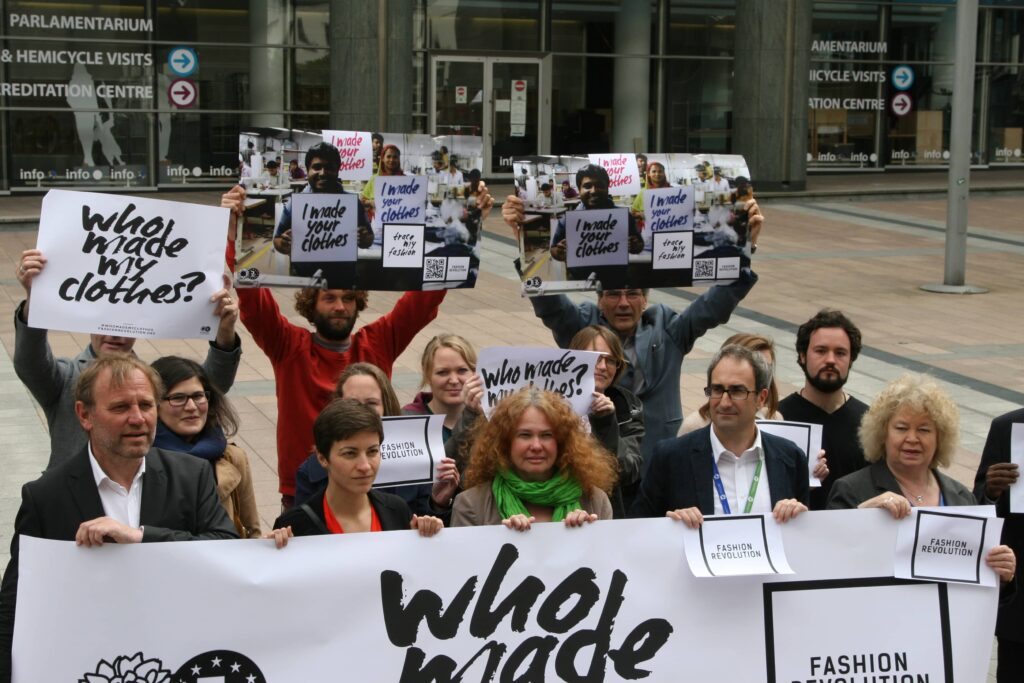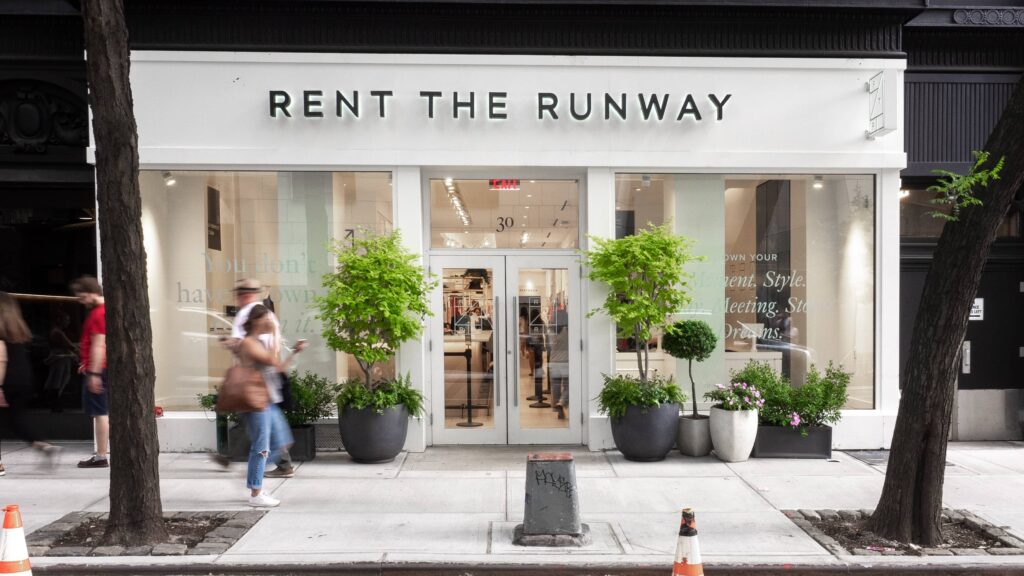Are Clothing Rentals the Answer to the Menace of Fast Fashion?
Discover how clothing rentals are revolutionizing fashion and combating fast fashion’s environmental impact. Learn about the growth of the rental market, from luxury items to streetwear, and explore how rental models like subscription services, peer-to-peer platforms, and rental retail are shaping the future of sustainable fashion.
What’s Driving Rental Fashion’s Growth?
ental clothing has come a long way since its humble beginnings as a way for people to loan occasion wear rather than buying a dress they would only wear once. Today the market has grown into a sector of the industry that holds its own. Customers who would like to rent now have various options, from luxury items to streetwear, there's a rental company for every style or budget. According to Business Wire, the rental market isn't slowing down anytime soon. They projected that the rental market could be valued at $2.08 Billion by 2025, a growth of 8.7% in 5 years. Let's look at what's driving this growth and what the market looks like today.
– Rise in awareness of Fashion’s Impact & Greenwashing
With the rise in awareness of the fashion industry’s negative impact on the planet came widespread greenwashing in marketing and communications. This has caused a lack of trust in the information coming from fashion brands. Rental clothing gives consumers an option that they are in direct control over.
They can be certain that by opting to rent rather than purchasing a new garment, they are making a positive impact. Rentals eliminate the need to dig into the brands’ sustainability practices or blindly trust their marketing.

–The Dilemma of Looking Good vs. Doing Good For the Planet
We’re living in the age of social media. Over the past decade, as platforms like Instagram and Pinterest matured, the way we consume fashion completely changed. The trend cycles went from being updated seasonally, marked by the September and March issues of fashion magazines, to changing almost weekly. On the positive side, this democratized fashion broke down the industry “gatekeepers”. However, constantly being bombarded with “newness” came with its own set of issues.
The rise in influencer marketing created a culture of wanting to be seen in a garment only once on social media. This has resulted in garments being tossed after only a few wears. A 2015 study by British charity Barnado’s found that, on average, a piece of clothing is only worn 7 times before being tossed. On the other hand, multiple surveys and reports have shown that Gen Z and Millennials want to shop sustainably. There is real tension rising between feeling the pressure to constantly refresh their wardrobe and protecting the planet with more sustainable shopping habits.
The rental market offers a solution that allows consumers to have the best of both worlds. It bridges the gap between wanting to look good and doing good. Consumers can wear the latest trends without sacrificing their planetary values by renting garments rather than buying them.
–The Shared Economy Moving into the Norm
In today’s world, ownership is not the status symbol it was 10-20 years ago. We can see this shift happening all over the world and across industries. You find cars, mopeds, scooters, and bikes all available to rent rather than own on city streets. Homeownership is down overall, and if you do own your house, you can share it for extra income on Airbnb. Need a tool, and you don’t want to buy it? Rent it from your neighbour with apps like “The Goodneighbor”.
Sharing has become a natural part of our society’s ecosystem. It allows owners to monetize their belongings and gives the “non-owners” access to the goods without the long term commitment or economic investment.
Fashion fits into the sharing economy seamlessly. Each year, between 80 billion and 150 billion pieces of clothing are manufactured. With a global population of 8 billion, it’s simple math to see that there is a surplus of clothing available. If we think about it on a personal level, on average, a woman’s wardrobe has 136 garments. Since we can only wear one outfit at a time, there’s plenty left over to rent out.

The Rental Fashion Market Today
While the sector is still young, we already see rental business models diversifying. With three major types available on the market today:
– Traditional Rental Subscription
The traditional model was pioneered by the American company Rent the Runway. It is run with the company owning their inventory and selling subscriptions for a monthly rental allowance. Most companies offering this type of service have a three-tiered subscription model, where the prices correlate with how many garments you can rent on a monthly basis. For example, in the case of Rent the Runway, their plans are: 8 articles for $99, 12 articles for $129, and 16 articles for $149.

Who’s Doing it?
– Peer-To-Peer Rental
As the rental market started to gain traction, a new model emerged. The peer-to-peer model works as a social-styled platform that allows individuals to rent their wardrobes to other people. Similar to DePop in the resale market, the community drives the P2P platform. Individuals upload photos of the garments they want to rent, and if someone is interested in renting them, they will connect with them to set up the terms of rental.
By Rotation, the British app that launched their social-media rental platform 3 years ago, has already racked up an impressive 100k followers while only being available in the UK market. This model offers an opportunity to further drive the sustainability aspects of rental, with no “new” products needing to be purchased by the company, but rather mobilizing the existing wardrobes all over the world.
Who’s Doing it?
– Rental Retail
Traditional retailers and brands aren’t left out in the cold with rentals. They are embracing the rental model into the mix of their traditional offerings. Owning their rental rather than outsourcing to traditional rental subscription allows brands more flexibility and control. For example, Rebecca Taylor’s “Rebecca Taylor RNTD” allows their renters to pay $99 for unlimited rental swaps, including the dry cleaning. This becomes a more lucrative option for a customer who likes the Rebecca Taylor brand than the traditional subscription.
Multi-brand retailers are starting to get in on the action too. With a wide assortment, customer awareness, and an established relationship with brands, the entry into the rental market seems like a natural next step for multi-brand retailers. In 2019, Bloomingdales was the first to launch its own subscription rental service, My List, working similar to the traditional rental subscription, with a flat fee of $139 for monthly rentals. Nordstrom took another approach by partnering with Rent The Runway to sell their previously rented garment in their Nordstrom Rack stores.
Who’s Doing it?
Rentals Moving Forward
Even though rental fashion has shown tremendous growth, it wasn’t left unaffected by the pandemic. With a shortage of events to attend amidst the virus outbreak, fewer people need to rent clothes. However, companies have taken several steps to tackle the situation, from incentivizing people to list their wardrobes to adding more product lines, following rigorous cleaning and safety protocols and reinventing cost-effective subscription models.
As restrictions eased over the summer, we started to get glimpses of how people in a post-pandemic world will dress. After months of being in cosy clothes, people came out ready to impress, with glamour, casual suiting, and loud colours making their way back in vogue. This new affinity to play with fashion paired with the rising conscious consumer mindset gives industry leaders good reason to remain confident that clothing rentals are not only here to stay but to thrive.
Lorem ipsum dolor sit amet, consectetur adipiscing elit. Ut elit tellus, luctus nec ullamcorper mattis, pulvinar dapibus leo
Gabrielle is a Strategist, Researcher, and Writer. She is the CMO/Co-Founder of Menabòh. You can find more of her thoughts on Conscious Style, Living, and Travel on her blog






